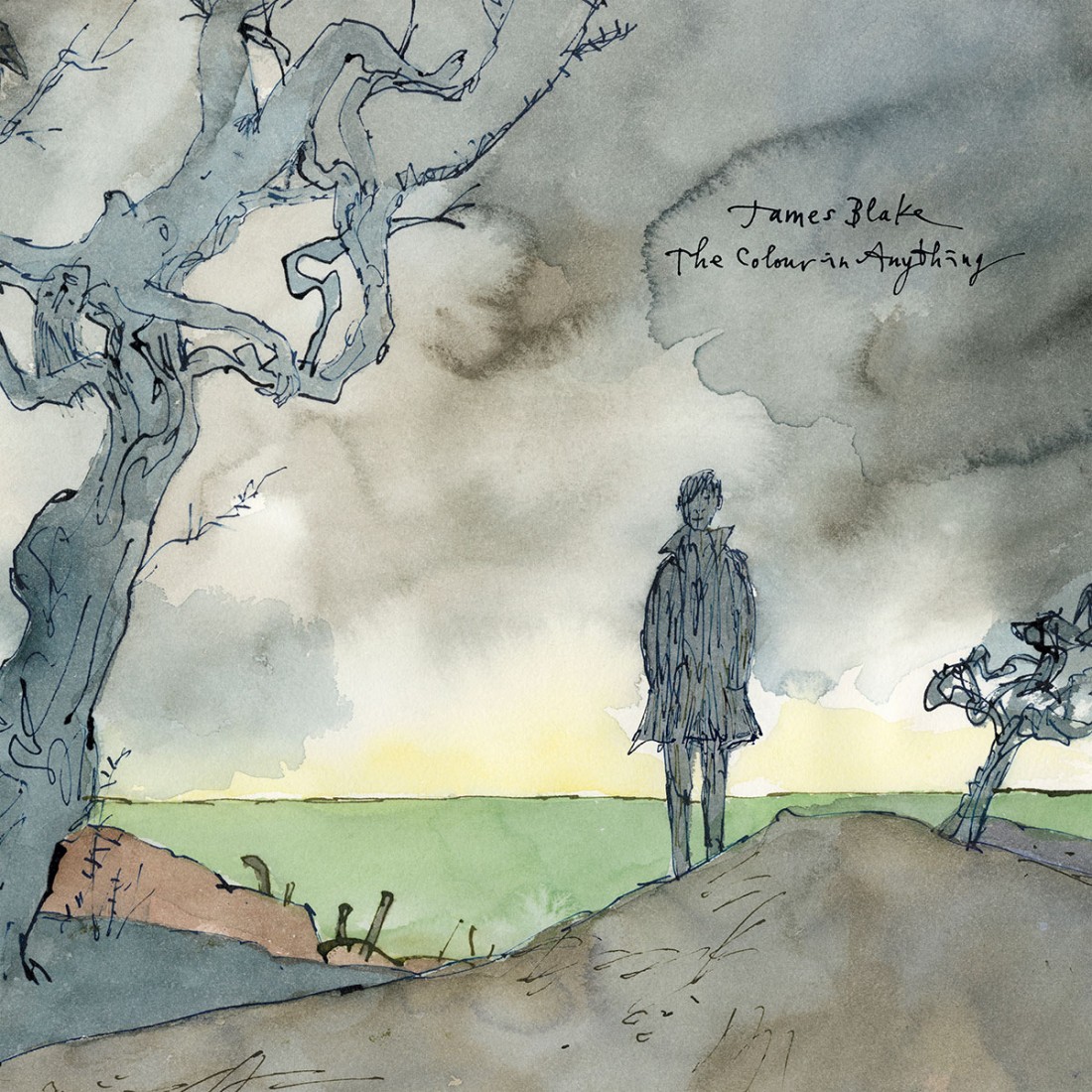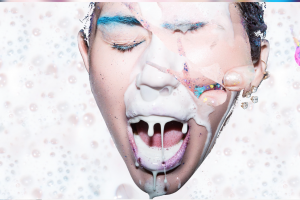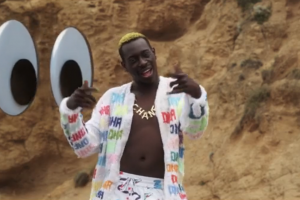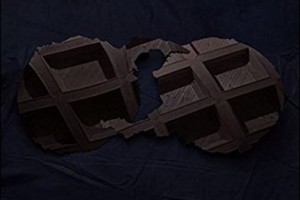James Blake “The Color In Anything” / Christian Naujoks „Wave“
- James Blake
- Christian Naujoks
James Blake “The Color In Anything” (Universal)
Christian Naujoks „Wave“ (Dial)
Last night I dreamt, that I was lying in a hotel room with James Blake. Not, as one might expect, in a bed. We were laying on a perfectly soft carpet. He looked deeply in my eyes and told me that “The Color In Anything“ came about exactly like this: Him laying on his back, the laptop and a small makeshift microphone next to him, and the room full of flowers. Only now I realized, that a gazillion of flowers were standing all around us: the wildest, prettiest flowers you could imagine, exotic orchids and weeds of extraterrestrial beauty. I looked at him bewildered, like you regard someone, who wants to bust your balls, somewhat skeptically. And what did he do? He took me into his arms, cradled me tightly and asked if I couldn’t feel this, when I am listening to the album?
What am I supposed to answer to this? I hadn’t even listened to the album yet. Up until now, he drew the short straw to Drake, Beyonce, Radiohead, and especially ANONI, in the release-frenzy of the last weeks. Only a string of text messages, which I received from a Kaput writer from Berlin, and who compared the album to “Rumors“ from Fleetwood Mac, “Harvest Moon“ from Neil Young and Arthur Russell’s works, made me take notice. Well, the writer is obviously drunk, it rushed int my head and I didn’t get the the impulse to listen to it immediately.
But I didn’t tell that to James Blake in my dream. Instead I cradled him as well and hummed a melody, or what I thought was one, into his ear. Then I woke up and decided that “The Color In Anything“ had to be Record of the Week. And right now I’m listening to the record for the second time, and am looking at the purple flowers which are standing on my left on the kitchen table, bought on the day of Prince’s death and with a hardly comprehensible vigor, because they’re still in full bloom.
“The Color In Anything“ is a stunningly timeless album. Not in the sense of contemporaneity, what one might first think if one hears “timeless“, and especially not in the sense of the aforementioned comparison albums and -artists, introspective speaking. James Blake is collaging the songs on “The Color In Anything“ through repetitions and overlaps to such an neat way, that they seem to be stuck in a downright passive-aggressiv manner, and nonetheless run their course. A technical production trick, that frees the song from the unmediated pathos of his voice and the overwhelming fragility of the production, and thereby sets them free. And which I missed in the precursor “Overgrown“, when the rawness, which was even more present on the debut “James Blake“, had been replaced by skills and popness too naively.
It’s not, that Blake isn’t willing to step into the linearity-trap on “The Color In Anything“. Therefor he is too keen to get comfortable in his feelings, as on “Love Me In Whatever Way“. But even in these moments he allows surprising fractions, be it a short sagging of his vocal melody, that makes you immediately think of Rufus Wainwright, a billowing area in minor and dissonant inferring noises or even a nostalgically charged scratching, as it was used by early Hip Hop producers.
Talking about Hip Hop: James Blake did work with Frank Ocean from “The Color In Anything“ – and you can’t avoid to think that you recognize precisely his handwriting in some of the songs. For example in “Put That Away And Talk To Me“, which sounds like it’s played from a shellac record, or in “My Willing Heart“, which thrones over a dry backing beat.
My favorite song on the album is “Timeless“, which is equipped with all the ingredients you need for a rave-monster: atmospheric areas, perfectly illuminated signal sounds and a nervous melody, that you can hear spinning up before your inner ear – it’s solely, that Blake doesn’t allow the song to take off, quite as if he wants to prove everyone what other way might have been possible from his dubstep beginnings. His collaboration with Bon Iver (whom he came together in 2011 for the „Fall Creek Boys Choir“ already) turns out equally witty: “I Need A Forest Fire“, is basically a folk song, that was put on a Hip Hop loop. It is being teared open by an absurd exult repeatedly, and is furnished with a vocal coloring, that reminds you, not just by chance, of Prince.
If I would meet James Blake one again this night in a dream, if we would once again hang out on the carpet, then I would tell him, that I could very well feel the flowers and this special emergence atmosphere while listening to “The Color of Anything“, and that I am very touched by how he allowed a new brokenness out of his own history (pathos, crooner, piano) and the influences (Pop, Hip Hop – compare his songwriting contribution to Beyoncé’s new album). A brokenness, that doesn’t want to fool you, that it knows all the truths of suffering, but allows doubt and blank spaces – and sometimes even a sudden laughter, that doesn’t want to be more than an outlet for insecurity.
Actually, I did only want to write about „Wave“ the new album of Christian Naujoks at this place. But as it’s known to be that case, you should not fight your dreams, especially if the constellation that emerges as a consequence feels this great, because both artists have after all more in common than you would expect in the first place.
Christian Naujoks’ music also holds something timeless. While this impression is achieved in James Blake’s music by permanently jumping to and fro within the songs, it occurs in Christian Naujoks’ music through the courage of stagnancy. How confidently he is able to celebrate the moment, takes one’s breath away. You can hardly feel the air of movement when one tone replaces the previous.
In this way, the album’s title “Wave“ is downright coquettishly charged. If it is to be taken literally nonetheless, you suddenly are lying in a daydream at the sea and are feeling the last ripples of a wave moisten your leg’s skin. It’s getting barely wet through it, but the titillating feeling the sun leaves on it is afterwards completely different.
Naujoks is influenced from Hip Hop and R’n’B, just like Blake. But he distills all obviousness from these influences and all that’s left in his songs is a subtile notion of vibe, a tang of vibration, that seems, because of its fragmented character, more alien than suitable and only in the course of “Wave“ merges into a consistent overall picture – this delay of the realization of the actual essence of the music in front of you is feature, that had already been featured in Naujoks’ two previous albums “Untitled“ and “True Life/In Flames“. Only in the reverberation, or rather the repeated reverb, the rigor of his compositions (reminding of minimal composers like Steve Reich), and the endless sadness inherent to the sound (I’m constantly reminded of the biggest of all Pop-avant-gardis,t Mark Hollis of Talk Talk), the warm-heartedness, and the will to embrace are being revealed. The only exception to this is “Jet Stream“, which is downright blunt compared to Naujoks’ works.
“Wave“ is a masterpiece of understatement.
Thomas Venker
Translation: Denise Oemcke
















